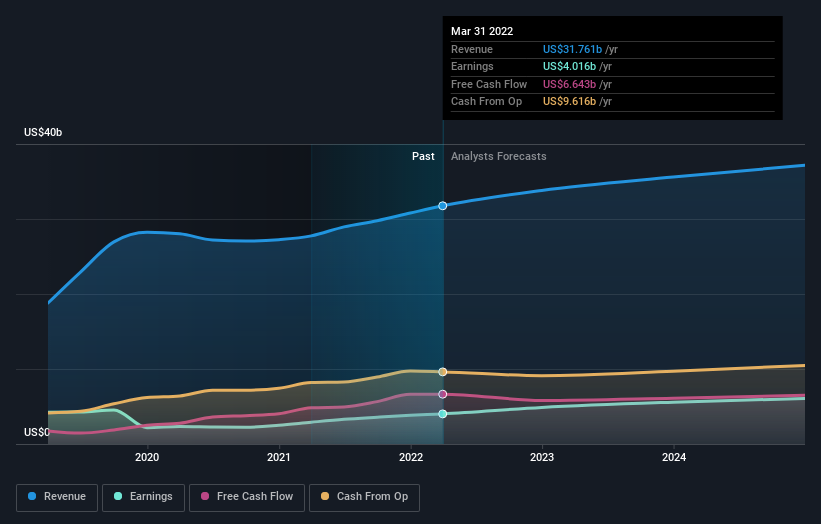
Today we're going to take a look at the well-established Linde plc (NYSE:LIN). The company's stock received a lot of attention from a substantial price movement on the NYSE over the last few months, increasing to US$336 at one point, and dropping to the lows of US$271. Some share price movements can give investors a better opportunity to enter into the stock, and potentially buy at a lower price. A question to answer is whether Linde's current trading price of US$274 reflective of the actual value of the large-cap? Or is it currently undervalued, providing us with the opportunity to buy? Let’s take a look at Linde’s outlook and value based on the most recent financial data to see if there are any catalysts for a price change.
Check out our latest analysis for Linde
Is Linde still cheap?
According to my valuation model, Linde seems to be fairly priced at around 5.2% below my intrinsic value, which means if you buy Linde today, you’d be paying a fair price for it. And if you believe the company’s true value is $288.78, then there’s not much of an upside to gain from mispricing. Furthermore, Linde’s low beta implies that the stock is less volatile than the wider market.
What does the future of Linde look like?

Investors looking for growth in their portfolio may want to consider the prospects of a company before buying its shares. Although value investors would argue that it’s the intrinsic value relative to the price that matter the most, a more compelling investment thesis would be high growth potential at a cheap price. With profit expected to grow by 55% over the next couple of years, the future seems bright for Linde. It looks like higher cash flow is on the cards for the stock, which should feed into a higher share valuation.
What this means for you:
Are you a shareholder? It seems like the market has already priced in LIN’s positive outlook, with shares trading around its fair value. However, there are also other important factors which we haven’t considered today, such as the financial strength of the company. Have these factors changed since the last time you looked at the stock? Will you have enough conviction to buy should the price fluctuates below the true value?
Are you a potential investor? If you’ve been keeping an eye on LIN, now may not be the most advantageous time to buy, given it is trading around its fair value. However, the optimistic prospect is encouraging for the company, which means it’s worth diving deeper into other factors such as the strength of its balance sheet, in order to take advantage of the next price drop.
If you'd like to know more about Linde as a business, it's important to be aware of any risks it's facing. At Simply Wall St, we found 1 warning sign for Linde and we think they deserve your attention.
If you are no longer interested in Linde, you can use our free platform to see our list of over 50 other stocks with a high growth potential.
New: AI Stock Screener & Alerts
Our new AI Stock Screener scans the market every day to uncover opportunities.
• Dividend Powerhouses (3%+ Yield)
• Undervalued Small Caps with Insider Buying
• High growth Tech and AI Companies
Or build your own from over 50 metrics.
Have feedback on this article? Concerned about the content? Get in touch with us directly. Alternatively, email editorial-team (at) simplywallst.com.
This article by Simply Wall St is general in nature. We provide commentary based on historical data and analyst forecasts only using an unbiased methodology and our articles are not intended to be financial advice. It does not constitute a recommendation to buy or sell any stock, and does not take account of your objectives, or your financial situation. We aim to bring you long-term focused analysis driven by fundamental data. Note that our analysis may not factor in the latest price-sensitive company announcements or qualitative material. Simply Wall St has no position in any stocks mentioned.
About NasdaqGS:LIN
Linde
Operates as an industrial gas company in the Americas, Europe, the Middle East, Africa, Asia, and South Pacific.
Proven track record second-rate dividend payer.


